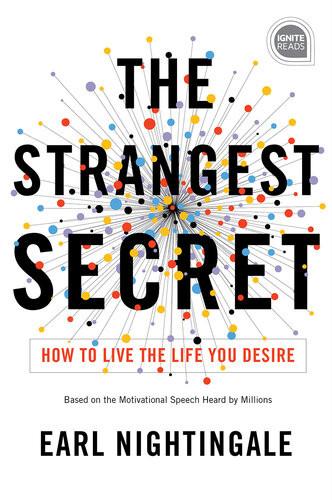EDIBLE MUSHROOMS
Chemical Composition and Nutritional Value
PAVEL KALAČ
Professsor of Agricultural Chemistry, University of South Bohemia, České Budějovice, Czech Republic
Academic Press is an imprint of Elsevier
Academic Press is an imprint of Elsevier 125, London Wall, EC2Y 5AS.
525 B Street, Suite 1800, San Diego, CA 92101-4495, USA
50 Hampshire St., 5th Floor, Cambridge, MA 02139, USA
The Boulevard, Langford Lane, Kidlington, Oxford OX5 1GB, UK
Copyright © 2016 Elsevier Inc. All rights reserved.
No part of this publication may be reproduced or transmitted in any form or by any means, electronic or mechanical, including photocopying, recording, or any information storage and retrieval system, without permission in writing from the publisher. Details on how to seek permission, further information about the Publisher’s permissions policies and our arrangements with organizations such as the Copyright Clearance Center and the Copyright Licensing Agency, can be found at our website: www.elsevier.com/permissions
This book and the individual contributions contained in it are protected under copyright by the Publisher (other than as may be noted herein).
Notices
Knowledge and best practice in this field are constantly changing. As new research and experience broaden our understanding, changes in research methods, professional practices, or medical treatment may become necessary.
Practitioners and researchers must always rely on their own experience and knowledge in evaluating and using any information, methods, compounds, or experiments described herein. In using such information or methods they should be mindful of their own safety and the safety of others, including parties for whom they have a professional responsibility.
To the fullest extent of the law, neither the Publisher nor the authors, contributors, or editors, assume any liability for any injury and/or damage to persons or property as a matter of products liability, negligence or otherwise, or from any use or operation of any methods, products, instructions, or ideas contained in the material herein.
ISBN: 978-0-12-804455-1
British Library
Cataloguing-in-Publication Data
A catalogue record for this book is available from the British Library
Library of Congress
Cataloging-in-Publication Data
A catalog record for this book is available from the Library of Congress
For information on all Academic Press publications visit our website at www.elsevier.com
Typeset by MPS Limited, Chennai, India
www.adi-mps.com
Printed and bound in the United States
Publisher: Nikki Levy
Acquisition Editor: Nina Bandeira
Editorial Project Manager: Mariana Kuhl Leme
Editorial Project Manager Inter: Ana Claudia A. Garcia
Production Manager: Lisa Jones
Marketing Manager: Ofelia Chernock
Cover Designer: Victoria Pearson
3.5
3.6
This page intentionally left blank
ACKNOWLEDGMENTS
I am particularly indebted to my colleagues Professor Martin Křížek, for his encouragement, Iveta Štefanová, MSc, for drawing chemical formulas and schemes, and Dr. Martin Šeda, for his help during communication with the editors. Mushroom images provided by Dr. Jan Borovička, Dr. Eva Dadáková, and Dr. Ivan Jablonský are acknowledged. Moreover, I highly appreciate the attitude and help of the Elsevier editors Ms. Nina Bandeira and Ms. Ana Claudia Abad Garcia.
This page intentionally left blank
LIST OF FIGURES
Figure 1.1 A sketch of a mushroom. 5
Figure 3.1 Chemical structure of the main eight-carbon volatiles. 83
Figure 3.2 Chemical structure of lenthionine, which causes the valued flavor of dried Lentinula edodes (shiitake) and its precursor, lentinic acid. 85
Figure 3.3 Chemical structure of the main aliphatic acids occurring in mushrooms. 89
Figure 3.4 Chemical structure of the main phenolic acids occurring in mushrooms.
Figure 3.5 Indole-containing compounds detected in mushrooms.
Figure 3.6 Purine compounds contributing to mushroom taste.
Figure 3.7 Chemical structure of biogenic amines and polyamines detected in mushrooms.
Figure 4.1 Chemical structure of eritadenine.
Figure 4.2 Chemical structure of ergothioneine and gamma-aminobutyric acid (GABA).
Figure 5.1 A simplified scheme of carcinogen formation from agaritine.
Figure 5.2 A scheme of toxic hydrazine formation from gyromitrin.
Figure 5.3 A simplified scheme of toxic cyclopropanone hydrate formation from coprine.
101
104
108
109
146
147
156
158
162
This page intentionally left blank
Table 3.4 Content of phenolic acids (mg 100 g 1 dry matter) in selected mushroom species
92
Table 3.5 Content of indole compounds (mg 100 g 1 dry matter) in selected fresh mushroom species 105
Table 3.6 Usual content (mg kg 1dry matter) of main trace elements in mushroom fruit bodies from unpolluted areas and accumulating genera and species known currently 116
Table 3.7 Usual content (mg kg 1dry matter) of trace elements with limited data in mushroom fruit bodies from unpolluted areas and accumulating genera and species known currently
124
Table 4.1 Common name (or symbol) of β-glucans isolated from various mushroom species 141
Table 4.2 Content of lovastatin (mg 100 g 1 dry matter) in selected mushroom species 145
Table 4.3 Content of γ-aminobutyric acid (GABA) and ergothioneine (mg 100 g 1 dry matter) in selected mushroom species 148
Table 5.1 Selected edible mushroom species with different rates of radiocesium 137Cs accumulation 171
CHAPTER 1 Introduction
Contents
1.1 Basic Mycological Terms 4 References 6
Fresh and preserved mushrooms are consumed in many countries as a delicacy, particularly for their specific aroma and texture, but also for their low energy level and fiber content. However, mushrooms became a required part of nutrition during periods of staple food shortage, such as during wars. Approximately 14,000 mushroom species, described according to the rules of mycological nomenclature, represent approximately 10% of the estimated number of species existing on Earth. More than 2000 species are safe for consumption, and approximately 700 species are known to possess significant pharmacological properties (Wasser, 2002). Information on number of edible species collected for culinary purposes throughout the world varies widely between 200 and 3000. Approximately 100 species can be cultivated commercially, but only 10–20 of them can be cultivated on an industrial scale (Chang and Miles, 2004). The mushroom industry has three main segments: cultivated edible, wild-growing, and medicinal mushrooms.
According to FAOSTAT data (Table 1.1), the total world production of cultivated mushrooms was nearly 10 million tons in 2013, whereas it was only 4.2 million tons in 2000. China has been the leading producer by far. The most produced species is the Agaricus bisporus (white or button mushroom, brown mushroom, or portobello), dominating worldwide, followed by Lentinula edodes (commonly called by its Japanese name, shiitake), a species of genus
DOI: http://dx.doi.org/10.1016/B978-0-12-804455-1.00001-1
Many mushroom species are toxic. The inability of immobile higher fungi to escape from an attack by fungivores, ranging from insects to mammals, has led to the evolution of several defense strategies to deter the pests. Fruit bodies of fungi often produce toxins and pungent or bitter compounds to deter fungivores (for an overview see Spiteller, 2008). This book does not focus on toxic mushroom species because such information is accessible elsewhere.
Similarly, this book does not deal with medicinal species, which are widely used in East Asian folk medicine and have been recently extensively studied as potential sources of novel drugs. Commercial products from medicinal mushrooms have been obtained from large-scale cultivation of fruit bodies. However, under such conditions it is difficult to sustain a regular level of effective compounds. Therefore, the production of fungal mycelium by submerged cultivation increases. The medicinal targets are very wide; antioxidant, antitumor, antidiabetic, antimalarial, antiviral, antimicrobial, anti-Alzheimer, and hypocholesterolemic activities have been observed. The specialized International Journal of Medicinal Mushrooms has been published since 1999. Several overviews of the topic are available (eg, De Silva et al., 2013; Lindequist et al., 2005; or Wasser, 2010).
1.1 BASIC MYCOLOGICAL TERMS
Scientific (Latin) names are used in the text because common names (eg, chanterelles, boletes, cepes, or truffles) are widely known for only the most consumed species, whereas less frequent mushroom species have more locally common names.
The term “mushroom” is used for a distinctive fruit body (mycocarp or carpophore) of a macrofungus (or higher fungus) that is large enough to be seen by the naked eye and to be picked up by hand. For culinary species, the term is used for the harvested, processed, and consumed part of macrofungi. Fruit






